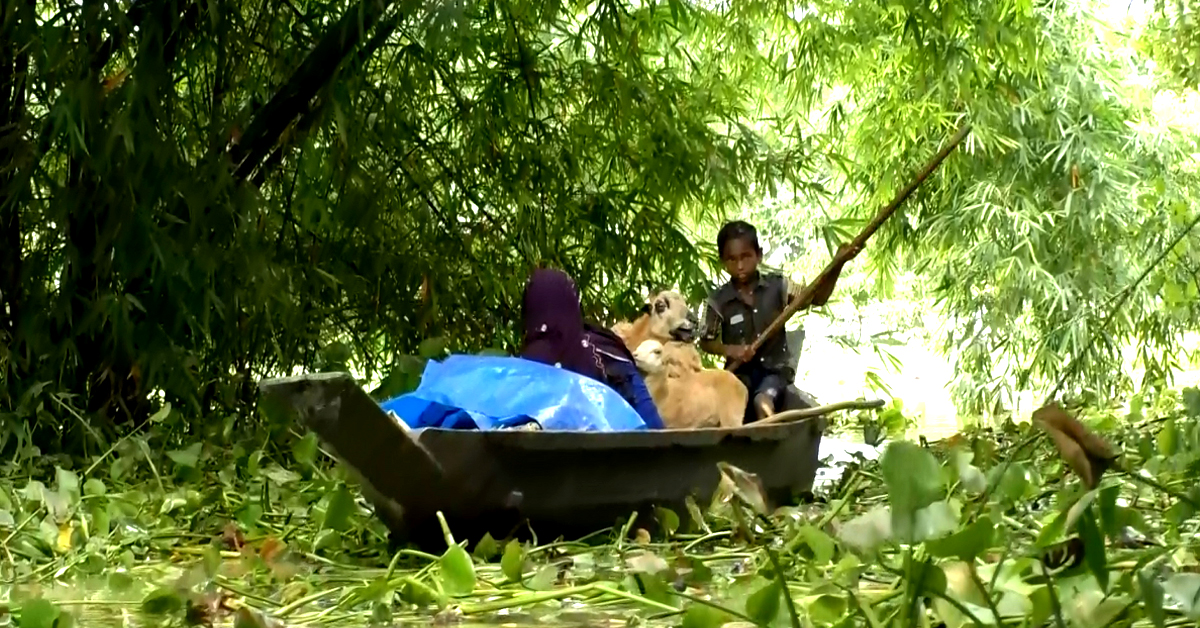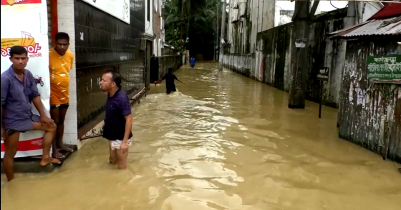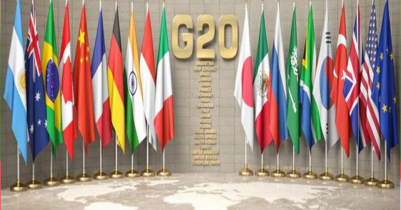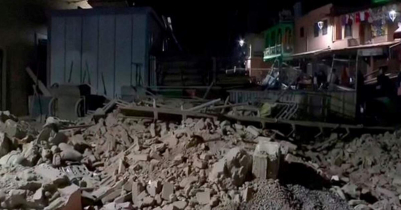Hasanat Kamal
Update: 19:42, 9 February 2025
South Asia on the Brink: How Climate Change is Fueling Crisis

Flood-Affected Bangladesh Struggles with Rising Waters.
South Asia, home to nearly two billion people, is one of the most climate-vulnerable regions in the world. From devastating floods and cyclones to prolonged droughts and extreme heatwaves, the effects of climate change are becoming more pronounced, threatening lives, livelihoods, and economies. This article delves into how climate change is posing an existential threat to South Asia, its far-reaching consequences, and the urgent need for regional and global action.
1. Rising Temperatures and Deadly Heatwaves
The average temperature in South Asia has been rising steadily, with extreme heatwaves becoming more frequent and severe. India, Pakistan, and Bangladesh have witnessed record-breaking temperatures in recent years, causing heat-related illnesses and fatalities. The increasing heat also reduces agricultural productivity and puts immense pressure on water resources.
2. Glacial Melting and Water Crisis
The Himalayas, known as the “Third Pole,” provide water to millions through major rivers like the Ganges, Indus, and Brahmaputra. However, global warming is accelerating glacial melting, leading to unpredictable water flows. This not only causes devastating floods but also threatens long-term water security for agriculture and drinking supplies.
3. Devastating Floods and Rising Sea Levels
Monsoon-induced floods have always been a part of South Asia’s climate, but climate change is making them more severe and unpredictable. Bangladesh, India, Nepal, and Pakistan suffer from annual floods that displace millions, destroy infrastructure, and claim lives. Additionally, rising sea levels are threatening coastal cities like Mumbai, Karachi, and Dhaka, leading to increased migration and loss of livelihood.
4. Droughts and Desertification
In contrast to extreme flooding, many parts of South Asia are facing prolonged droughts. Regions in India and Pakistan, particularly in Rajasthan and Sindh, are witnessing declining water tables and desertification. This is causing severe water shortages, food insecurity, and forcing rural communities to migrate to urban centers in search of better living conditions.
5. More Frequent and Intense Cyclones
Cyclones are becoming more intense due to rising ocean temperatures. Countries like Bangladesh, India, and Sri Lanka have experienced deadly cyclones such as Amphan, Yaas, and Fani, which caused widespread destruction, loss of life, and economic setbacks. The increasing frequency of these storms demands stronger disaster preparedness and mitigation efforts.
6. Declining Agricultural Productivity
Agriculture is the backbone of South Asia’s economy, but climate change is disrupting traditional farming patterns. Erratic rainfall, soil degradation, and temperature fluctuations are reducing crop yields, affecting food security and the livelihoods of millions. Farmers are struggling to adapt, and many are being forced to abandon farming altogether.
7. Loss of Biodiversity and Ecosystem Disruptions
Climate change is severely impacting South Asia’s rich biodiversity. The Sundarbans mangrove forest, home to the Bengal tiger, is under threat from rising sea levels and increased salinity. Coral reefs in the Indian Ocean are experiencing bleaching, and forest habitats are shrinking, pushing many species towards extinction.
8. Air Pollution and Climate Change
While air pollution is not solely a climate issue, the two are deeply intertwined. South Asia suffers from some of the worst air pollution levels in the world, largely due to industrial emissions, vehicle exhaust, and crop burning. The presence of black carbon accelerates glacial melting and contributes to erratic weather patterns, making air pollution a major climate risk.
9. Climate-Induced Migration and Social Unrest
As climate change makes rural areas uninhabitable, millions of people are being forced to migrate to urban centers. This rapid urbanization is leading to overcrowding, resource scarcity, and increased socio-economic tensions. Bangladesh, for instance, is already experiencing a rise in ‘climate refugees’ due to flooding and land erosion.
10. The Need for Regional and Global Cooperation
Addressing climate change in South Asia requires collective action. Governments must invest in renewable energy, climate-resilient infrastructure, and sustainable agriculture. Additionally, global cooperation is essential, as industrialized nations contribute the most to climate change but developing countries bear the brunt of its impact.
South Asia is at a tipping point, with climate change threatening every aspect of life in the region. Without urgent action, the situation will only worsen, leading to greater economic losses, environmental destruction, and humanitarian crises. Regional governments and global stakeholders must prioritize climate resilience, mitigation, and adaptation strategies to safeguard South Asia’s future. The time to act is now.
- Dubai-bound flight catches fire after taking off from Nepal
- Turkey`s homegrown 5th-generation fighter jet named KAAN
- Shihab Chottur reaches Makkah from India in 12 months
- Eid Ul Adha 2023 in Saudi Arabia!
- Italy will take 82 thousand workers, the is in March
- World`s first 3D-printed mosque to be constructed in Dubai
- India gets new parliament building
- Karnataka: Modi invokes `The Kerala Story` to target Congress
- Imran Khan likely to be in custody for ‘4 to 5 days’
- Two Sylheti killed in Portugal






























